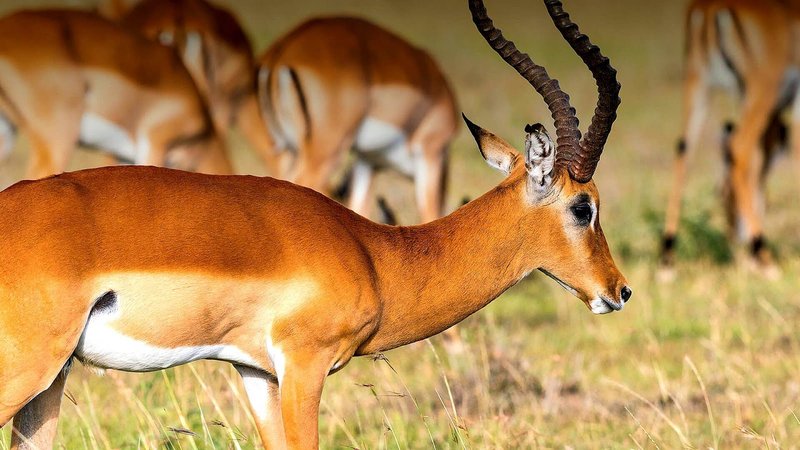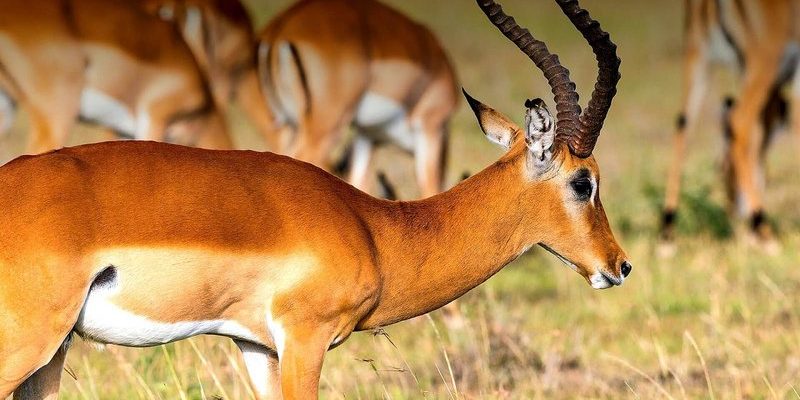
Imagine you’re hiking in the African bush, enjoying the beauty of nature, when you spot a herd of antelopes grazing peacefully. They seem like the picture of tranquility. However, just like any wild animal, they can act unpredictably if they feel threatened. In this article, let’s explore whether antelopes can be dangerous to humans, the circumstances under which they might attack, and what we can learn from these intriguing animals.
Understanding Antelope Behavior
Antelopes are generally shy and prefer to avoid confrontations. They rely on their keen senses to detect potential dangers, quickly darting away if they feel uneasy. These animals have evolved to be fast and agile, which is their primary defense mechanism against predators.
However, here’s the thing: like many animals, antelope behavior can change based on their environment and stress levels. If they’re cornered or protecting their young, their response can shift from flight to fight. It’s crucial to understand that their instinct is to flee, but when escape isn’t possible, they may stand their ground.
It’s also worth noting that there are over 90 species of antelope, ranging from the small dik-dik to the larger kudu or eland. Some species may have different temperaments or behaviors when it comes to human interactions. So, even though many antelopes are harmless, it’s good to be aware that their reactions can vary greatly depending on the situation.
When Antelopes Might Feel Threatened
Antelopes will defend themselves if they sense a threat. This could happen in various scenarios, such as:
- Protecting Young: Mother antelopes can become particularly aggressive if they perceive a threat to their calves. This protective instinct is common in the animal kingdom, and antelopes are no exception. A mother might charge at a perceived threat if she feels her young one is in danger.
- Habitat Encroachment: As human populations expand and habitats shrink, antelopes may feel cornered. When humans approach too closely, especially when it comes to their breeding or feeding grounds, these animals might react defensively.
- Injuries or Isolation: An injured antelope or one that has become cut off from its herd might lash out. Animals in pain can act unpredictably, making previously harmless creatures a bit more dangerous.
In these situations, you might see an antelope displaying signs of aggression, like stamping its feet or snorting. Yet, most of the time, they would rather avoid conflict altogether.
Potential Risks of Antelope Encounters
So, can antelopes really be dangerous? The short answer is yes, but it’s quite rare. Most encounters with these animals tend to be peaceful, but here are some potential risks to consider:
- Physical Injury: If an antelope feels threatened and charges, it can cause injuries. Their horns, particularly in species like the impala or kudu, can be quite sharp and dangerous. A wild animal’s sheer size and speed can lead to serious accidents if you’re in the way.
- Infectious Diseases: Like many wild animals, antelopes can carry diseases that might be transmissible to humans or domestic animals. For example, they can host ticks that carry Lyme disease or other pathogens, which can be a concern to consider when getting too close.
- Habitat Disruption: As humans encroach on their territories for farming or urban development, the pressure on antelope populations increases. Social stress within the herd can heighten territorial behavior, leading to an increase in aggressive encounters with humans.
Being aware of these risks can help you have safer interactions with antelope in the wild.
How to Safely Observe Antelopes
If you’re eager to see antelopes in their natural habitat, it’s important to do so safely. Here are a few tips:
- Keep Your Distance: Observe antelopes from a safe distance. Respect their space. Using binoculars or a good camera with zoom can allow you to enjoy their beauty without crowding them.
- Don’t Feed Wild Animals: While it might be tempting to feed these graceful creatures, doing so can alter their natural behavior and diet. It may also lead to aggressive encounters if they begin to associate humans with food.
- Learn About Their Behavior: Understanding more about the specific species you may encounter can help. Each antelope has its unique traits and behaviors. Spend a moment researching them before heading out.
Always remember, wild animals are unpredictable. The key is to enjoy their beauty while respecting their space and instinctive behaviors.
In summary, while antelopes are not inherently dangerous to humans, situations can arise where they may react defensively if they feel threatened or cornered. Understanding these magnificent creatures means appreciating their beauty while also recognizing their wild nature. By observing them safely and respecting their boundaries, we can enjoy their presence without putting ourselves—or them—in harm’s way.
So, next time you’re out in nature and catch a glimpse of an antelope, take a moment to appreciate its grace. Just remember to keep your distance and let these amazing animals be themselves in their natural setting.

